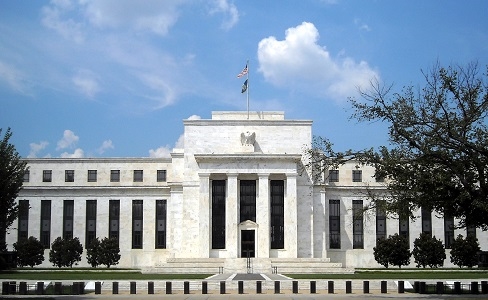On your marks, get Sef, go!
Swap execution facilities are set to go live in the US today with around 20 platforms ready to battle it out for business in the market for cleared swaps trading, writes Jonathan Watkins.
Despite calls from market participants and fellow regulators to delay the compliance date, the Commodity Futures Trading Commission and its chairman Gary Gensler have been adamant that the deadline would not be pushed back.
Therefore as of today, Bloomberg, ICE, CME, Icap, MarketAxess, trueEX, BGC Partners and a handful of other platforms will begin hosting the venues for the trading and clearing of swaps, as mandated by the G20 reforms in 2009.
 “We’re at the dawn of a new era in derivatives - this is zero, zero, zero on the clock and it starts now,” said Sunil Hirani, CEO of trueEX, the new exchange for interest rate swaps.
“We’re at the dawn of a new era in derivatives - this is zero, zero, zero on the clock and it starts now,” said Sunil Hirani, CEO of trueEX, the new exchange for interest rate swaps.
“In retrospect we will look back on it and say ‘this was the moment in time when fundamental market changes started taking place in the swaps market’.
The idea behind the Sefs is to reduce systemic risk in the financial markets by increasing transparency in OTC derivatives.
Following the financial crisis where swaps were held partially responsible, the G20 agreement mandated that OTC products would be forced through clearing to guard against any defaults from either counterparty.
Sefs were then created and rolled out by the CFTC as the platforms where regulated swaps trading would then take place.
First out the blocks
The US watchdog finalised the rules in May after much deliberation, subsequently leaving aspiring Sef platforms just four months to compile their applications.
Bloomberg was first out the blocks with its application and approval, while the other remaining Sefs applicants have been granted temporary registration in a two-week burst from the US regulator as the deadline approached.
“As one of the largest independent swaps trading platforms, operating a Sef for our clients is a logical progression for Bloomberg,” said Ben Macdonald, Bloomberg's global head of product and president of Bloomberg Sef, when it was approved.
“While clients can continue to execute on our traditional derivative platforms until the CFTC's mandatory compliance deadline, receiving approval ensures our readiness to provide them with everything they need to begin Sef trading on October 2nd.”
“The implementation of Sefs is one of the more meaningful ways the Dodd-Frank reforms have sought to increase transparency and standardisation in the swaps market.”
| "We risk a fragmentation of liquidity pools due to the inability of non-US venues to comply with the US regime, both legally and operationally," Michel Barnier. |
Delay the date
Despite the long-awaited arrival of Sefs, there were still calls for the date to be pushed back.
Michel Barnier, the European Union’s financial services chief, became the latest to request a delay earlier this week, saying the US and Europe need more time to reach a broader agreement on how to apply their respective rules to cross-border trades.
“In the absence of such relief, we risk a fragmentation of liquidity pools due to the inability of non-US venues to comply with the US regime, both legally and operationally,” Barnier said in a letter to CFTC chairman Gensler.
“We have already witnessed that venues are being forced to split their offerings into US and non-US trading pools.”
Gensler also received criticism from fellow Commissioner Scott O’Malia, who said participants would benefit from a time-limited extension to allow for a smooth transition to the new execution venues.
“If the Commission wants to foster a robust, competitive landscape for Sefs, it must be flexible enough to adjust the compliance date based on market and technology realities, and not stick with an unworkable date simply to adhere to an individual agenda.
| “We are aware of some issues," CFTC chairman Gary Gensler. |
“Frankly, I don’t blame them for being extra careful, given the fact that Commission staff publicly announced that it is not going to review Sef applications for substantive compliance.”
Aware of issues
Gensler commented in September that the CFTC was aware of problems and recognised the difficulty for platforms to meet the deadline.
“We are aware of some issues – whether it is how the pipes are between Sefs and clearing houses work, and some of the pipes between Sefs and data repositories work,” said Gensler.
“We want to sort through those things.
“We’re ploughing through 18 SEF applications, but the truth is that we’re giving them a cursory view.
“We’re not doing any deep dives.”
The issue of footnote 88 has also posed challenges by extending the types of contracts which Sefs had to accommodate from a few dozen products to hundreds.
The footnote essentially requires multiple-to-multiple intermediaries for any CFTC-regulated swap to register as a Sef.
Footnote 88
“Another troublesome issue that was brought up during the TAC meeting involves notorious Footnote 88 in the Sef final rules,” O’Malia added.
“The rules require existing multiple-to-multiple swap trading venues to register as Sefs, even if they only offer products that are not yet subject to the trade execution mandate.
“This has resulted in venues offering products like non-deliverable forwards and foreign exchange options to rush to get registration applications completed on time.”
The overdue launch date of the Sefs has been paid a large amount of attention by market participants and regulators but is unexpected to herald a surge of trading activity on the new platforms.
The other alternative of futurised swaps traded on exchanges was also brought into play by the likes of ICE, CME and Eris Exchange over the space of the past year.
Despite clearing mandates coming into force throughout 2013, it was reported that there had not been an explosion of trading on these platforms to coincide with the compliance dates.
According to industry experts discussion the platforms at FIA’s Bürgenstock event last week, there will be no big bang of trading activity on the Sefs on October 2.
Big bang theory
“I think our type of firms will have a wait and see attitude because it’s not clear which of these 19 Sefs will be successful,” said Remco Lenterman, managing director, IMC Financial Markets and chairman FIA European Principal Traders Association.
“There is not going to be a big bang.
George Harrington, global head fixed income trading at Bloomberg, said he believed there would be trades but not as many in comparison with the OTC activity currently performed.
“I think we will be going backwards before going forward,” said Harrington.
“Competition is making everyone uncomfortable.
“If Sefs become expensive and market participants are marking less money, then when you look at the business the liability is concerning.”
Industry experts have also said that the likeliness of all 20 Sefs succeeding in their ventures is unlikely.
“Because of people’s uncertainties, ‘which venue should I go to?’ There is going to be a discovery process,” said John Wilson, global head of OTC clearing, prime clearing services at Newedge.
Three keys to succes
The CFTC provided the temporarily registered Sefs and counterparties a brief additional time period to prepare for data reporting of some derivatives transactions, earlier this week amid concerns over duplication as multiple parties submit trades.
On boarding of buy-side participants has also been delayed for a month.
SEF reporting of foreign exchange swap reporting will also be put back to the end of October, while reporting for equity and commodity contracts will now not be formally implemented until December 2.
The CFTC said that SEFs may report directly to SDRs or use a third party to do so, but recognised that even with help SEFs may not be able to fulfil all of their obligations.
While there were some extensions on the reporting side, Gensler did not shift the compliance date for the Sefs despite the market pressure, meaning from today the new era of swaps trading has begun.
trueEX chief executive, Hirani, explained that the success of a Sef will come down to three things.
“Differentiated service in the products, liquidity and buy-side involvement - those are the three criteria,” said Hirani.
“This market has been more or less functioning the same way for decades in IRS, so it’s not surprising that there should be a lot of consternation and changes.”
Found this useful?
Take a complimentary trial of the FOW Marketing Intelligence Platform – the comprehensive source of news and analysis across the buy- and sell- side.
Gain access to:
- A single source of in-depth news, insight and analysis across Asset Management, Securities Finance, Custody, Fund Services and Derivatives
- Our interactive database, optimized to enable you to summarise data and build graphs outlining market activity
- Exclusive whitepapers, supplements and industry analysis curated and published by Futures & Options World
- Breaking news, daily and weekly alerts on the markets most relevant to you



